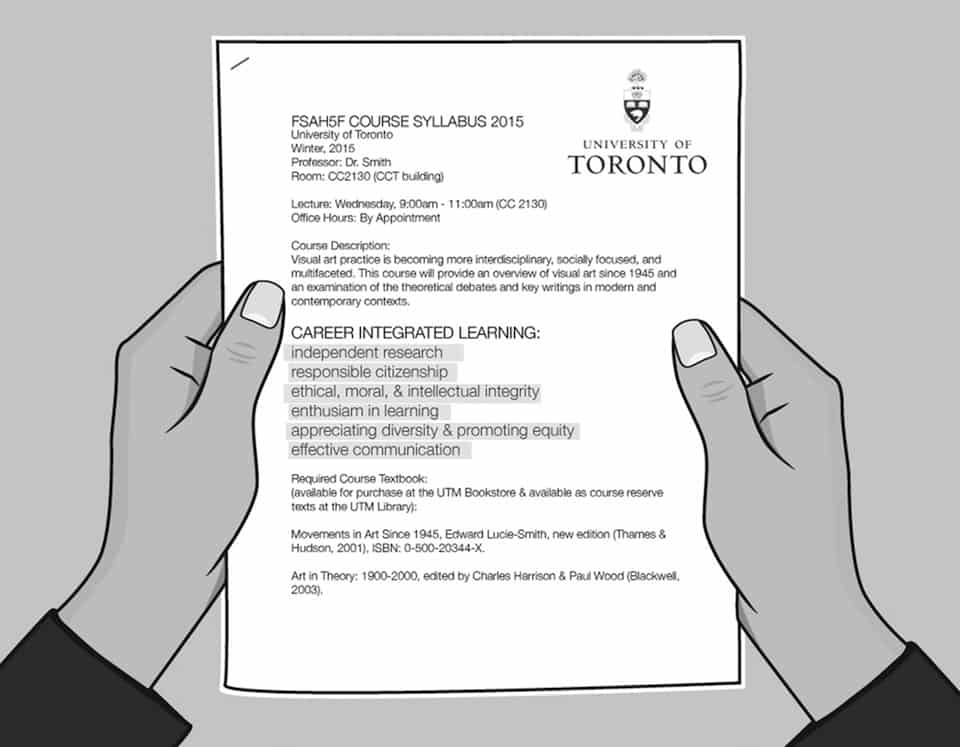U of T graduates rank as the most employable in Canada and thirteenth most employable in the world. The university’s president, Meric Gertler, has made it his goal to advance U of T’s status as a global university. To achieve this end, Gertler should promote and prioritize initiatives that will help U of T’s students develop and recognize usable and relevant skills to employ in the workforce.
Unfortunately, university can be seen as merely expected pre-requisite steps before young people move on to the working world. Humanities and social science students especially face increasing pressure to justify the value of their education to employers.
In our post-secondary education, focus is too often placed solely on rote memorization and formulaic analysis, which often neglects the true value of higher education — that is, critical thinking, independence, interpersonal skills, and other competencies. We must look beyond the mere content of course readings to the real skills that a university education can develop.
At Memorial University of Newfoundland an innovative project is underway to address this problem, with the help of a grant from the Counselling Foundation of Canada: the Career Integrated Learning Project. Career integrated learning takes a “grassroots approach to creating awareness of graduating student competencies.” These competencies include knowledge of one’s field; responsible citizenship; ethical, moral, and intellectual integrity; enthusiasm in learning; appreciating diversity and promoting equity; and effective communication.
Clearly, these are skills that carry immense value beyond both the classroom and the university. U of T should explore, and ultimately implement, a career integrated learning model for three reasons: it’s easy to enact, it’s cost-effective, and it works.
A common objection to reforming post-secondary education to better emphasize professional skill development is institutional inertia; professors don’t want to change their curriculum. However, the beauty of the career integrated learning model is that it doesn’t require intensive curricular changes.
Rather than forcing professors to radically alter their syllabi, career integrated learning instead allows them to draw out and formally recognize the skills that already are developed in their curriculum. Professors include the competencies as a new section in their syllabus; both students and professors are then encouraged to reflect upon them throughout the course.
The career integrated learning model is also cost-effective in helping students develop the strengths they need to succeed in today’s professional environment and the associated cost is minimal. While summer abroad programs and other international opportunities are fantastic and highly valuable, they are expensive, creating significant is sues with equitable access to these programs. It is important to not just look abroad to improve students’ competitiveness in a globalized environment economy, but also to look within the university at how important abilities can be developed within the classroom.
Finally, career integrated learning works and is the product of years of research, teaching, and student feedback and career development practice. The career landscape is changing and it is important to prepare students for what is ahead. Student reviews from the program have been overwhelmingly positive.
Overall, career integrated learning shows great promise and is an option U of T should actively explore. Given the immense size of the university, a career-integrated model of learning would certainly take time to implement. While the university struggles with funding issues and the challenge of meeting high costs of research, it should take advantage of cost-effective programs like career integrated learning that will foster a forward-thinking, positive learning environment.
Sasha Boutilier is a third year student at St. Michael’s College studying political science and ethics, society and law.


